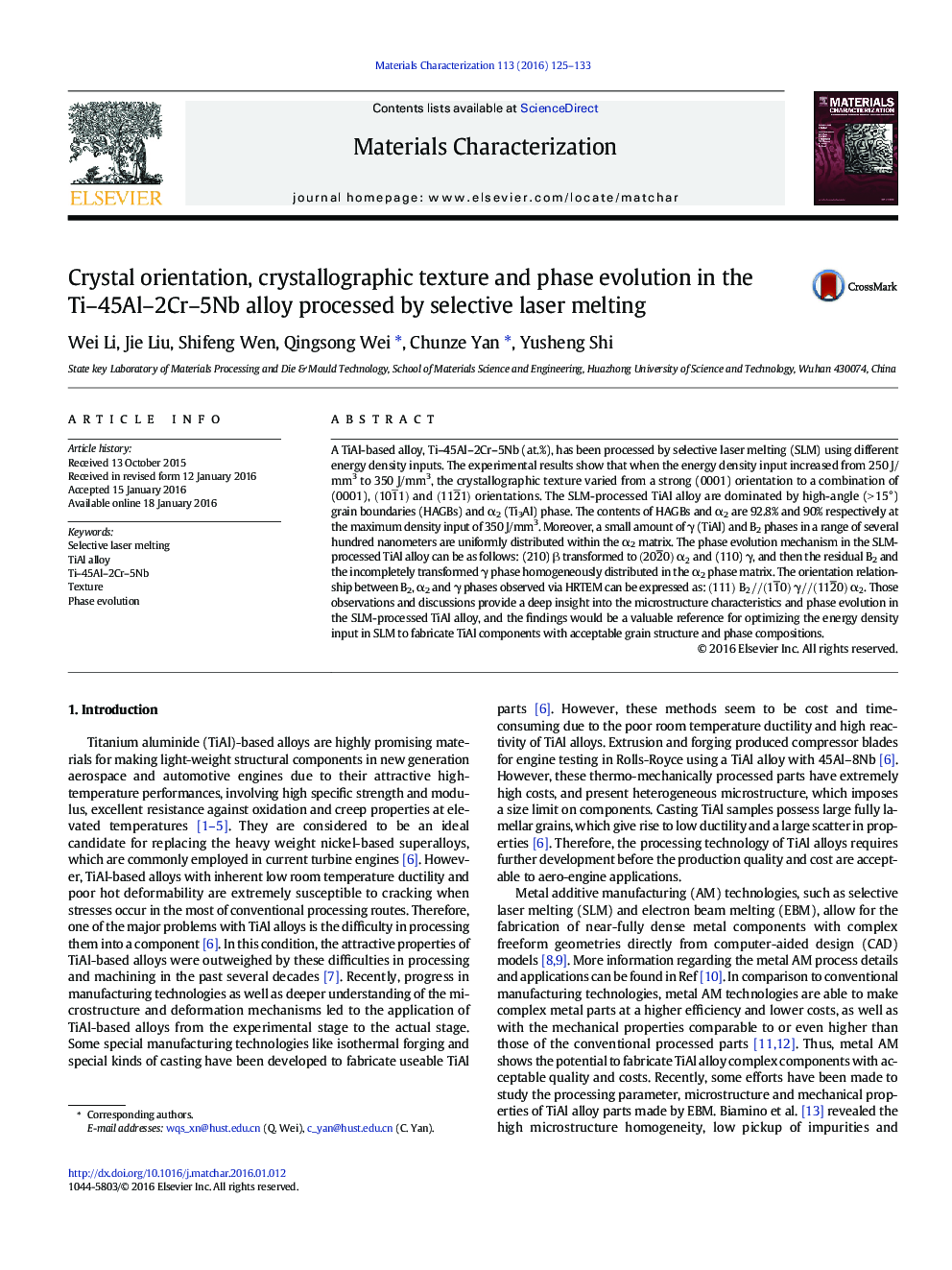| کد مقاله | کد نشریه | سال انتشار | مقاله انگلیسی | نسخه تمام متن |
|---|---|---|---|---|
| 1570747 | 1514374 | 2016 | 9 صفحه PDF | دانلود رایگان |

• The crystal orientation and texture varied with the increased energy density input.
• The contents of HAGBs and α2, γ, B2 phases were determined by EBSD.
• An evolution mechanism of the α2, γ, B2 phases in SLM was discussed.
• The orientation relationship between α2, γ, B2 phases were determined by HRTEM.
A TiAl-based alloy, Ti–45Al–2Cr–5Nb (at.%), has been processed by selective laser melting (SLM) using different energy density inputs. The experimental results show that when the energy density input increased from 250 J/mm3 to 350 J/mm3, the crystallographic texture varied from a strong (0001) orientation to a combination of (0001), 101̅1 and 112̅1 orientations. The SLM-processed TiAl alloy are dominated by high-angle (> 15°) grain boundaries (HAGBs) and α2 (Ti3Al) phase. The contents of HAGBs and α2 are 92.8% and 90% respectively at the maximum density input of 350 J/mm3. Moreover, a small amount of γ (TiAl) and B2 phases in a range of several hundred nanometers are uniformly distributed within the α2 matrix. The phase evolution mechanism in the SLM-processed TiAl alloy can be as follows: (210) β transformed to 202̅0α2 and (110) γ, and then the residual B2 and the incompletely transformed γ phase homogeneously distributed in the α2 phase matrix. The orientation relationship between B2, α2 and γ phases observed via HRTEM can be expressed as: 111B2//11̅0γ//112̅0α2. Those observations and discussions provide a deep insight into the microstructure characteristics and phase evolution in the SLM-processed TiAl alloy, and the findings would be a valuable reference for optimizing the energy density input in SLM to fabricate TiAl components with acceptable grain structure and phase compositions.
Figure optionsDownload as PowerPoint slide
Journal: Materials Characterization - Volume 113, March 2016, Pages 125–133